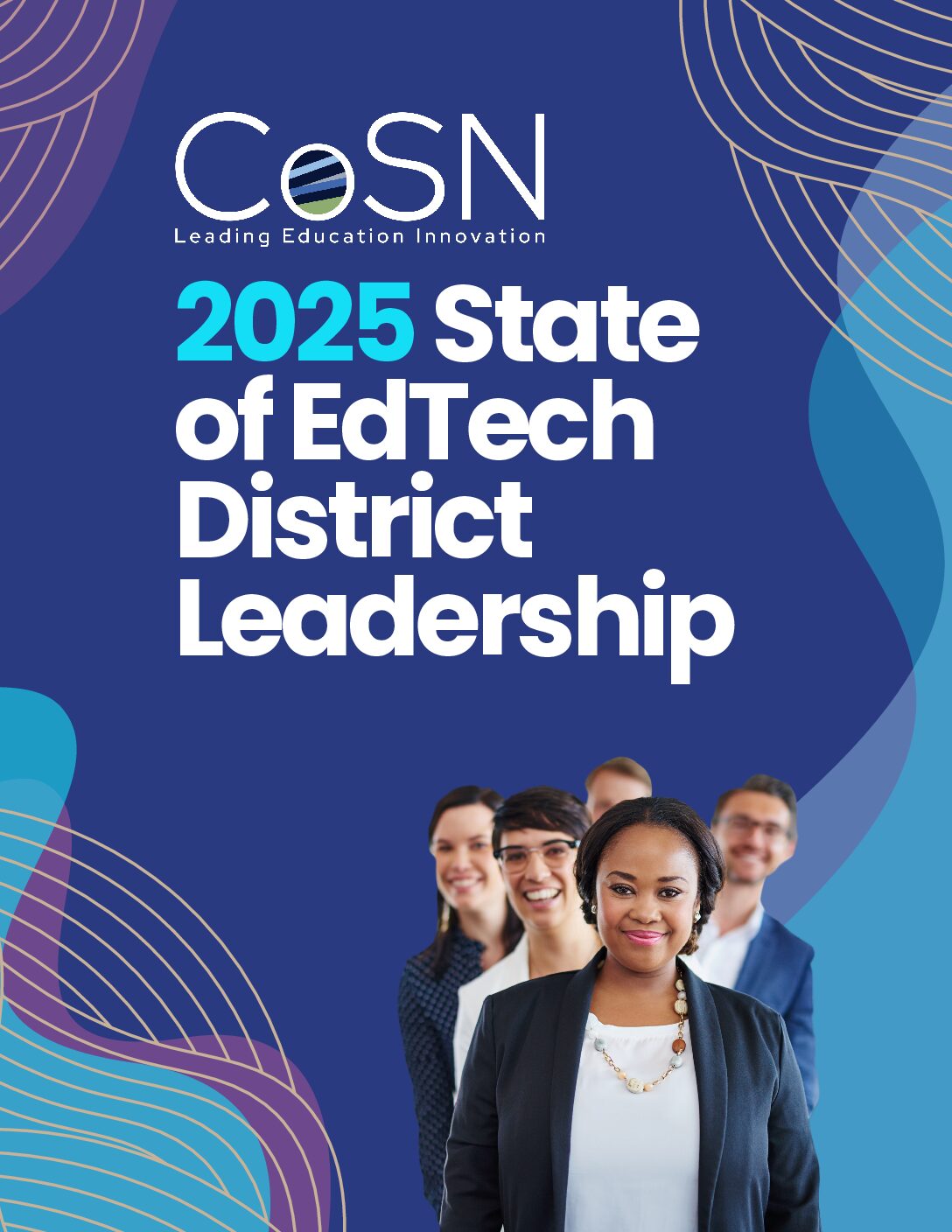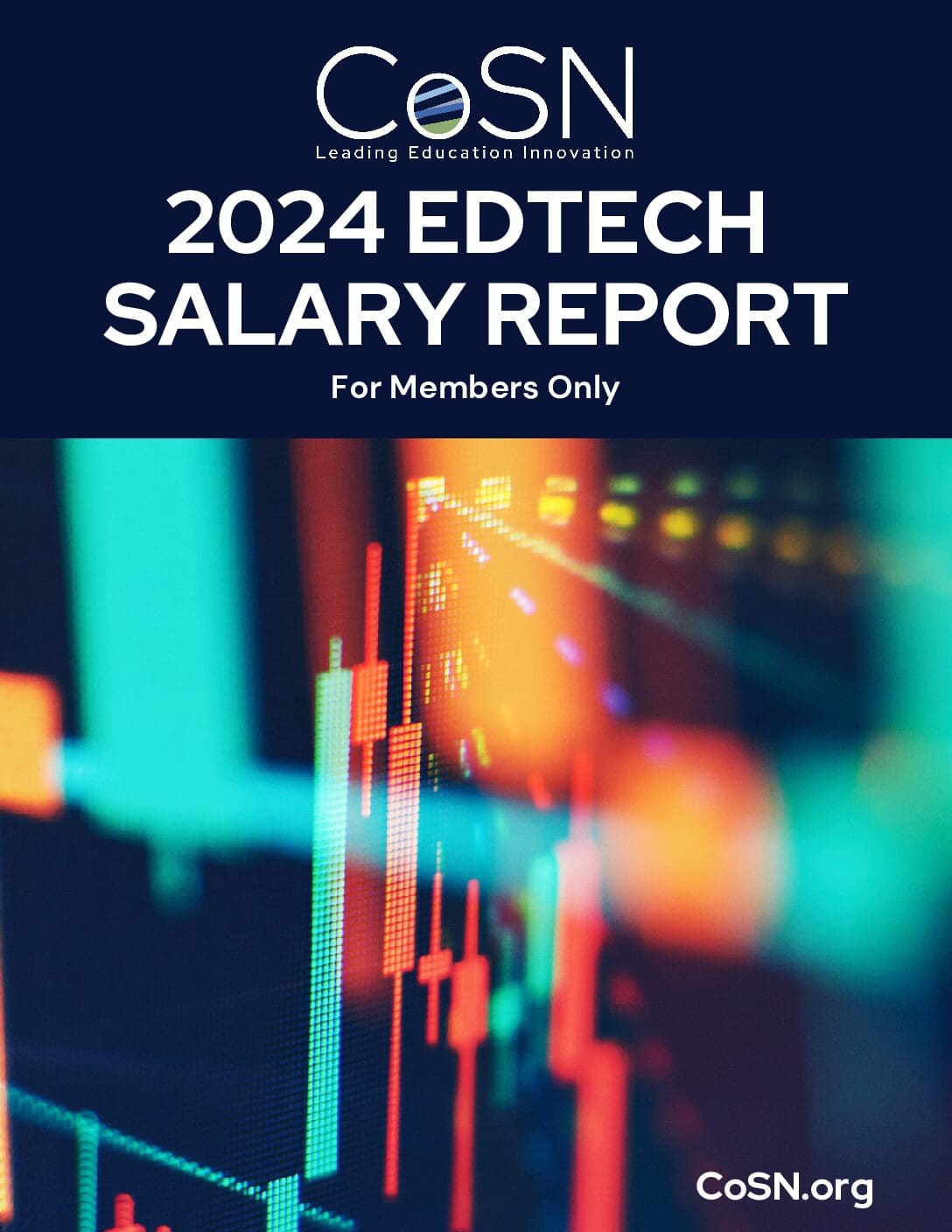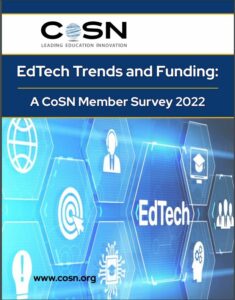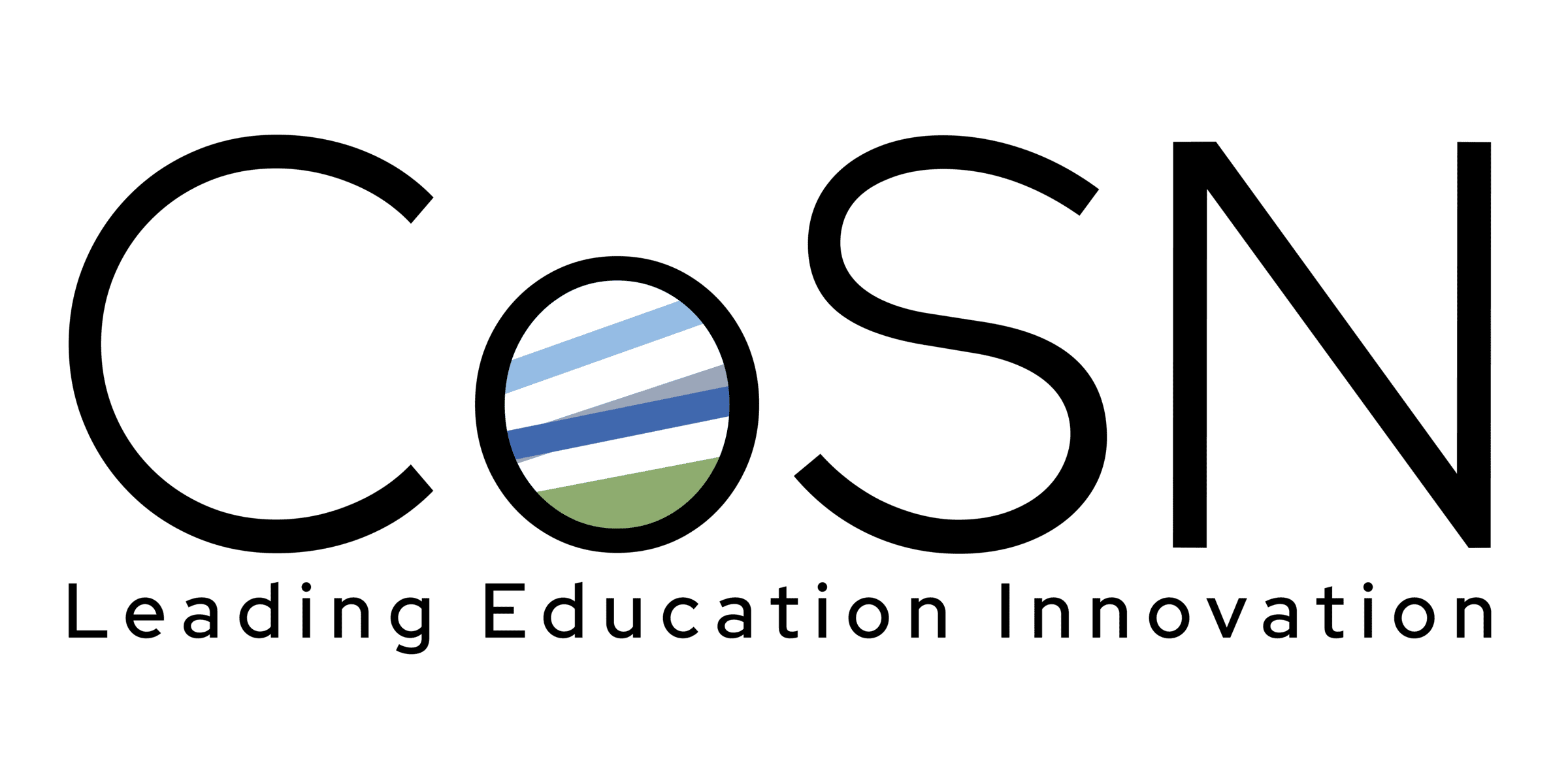2024 State of EdTech Leadership Survey
The education technology profession is constantly evolving, and a lot has changed since we conducted our initial survey of U.S. School System EdTech leaders in 2013. What hasn’t changed is the goal of CoSN’s annual survey—to give our community a national perspective on the EdTech landscape, the challenges EdTech leaders face, and the successes they have had.
Now in its 12th year, the 2025 State of EdTech District Leadership report provides important benchmarks on emerging AI technologies and evolving cybersecurity measures. It also provides valuable insights that can help inform the decisions of other education stakeholders —superintendents, school boards, and business officers—on priorities and budgets. Additionally, the survey findings guide CoSN's resource and program development. Understanding districts' needs enables CoSN to provide the support and the professional development that EdTech Leaders and their teams require to cultivate engaging learning environments.
Some Key Findings:
Digital Connectivity
If the Supreme Court finds that the administrative structure of the E-Rate program is unconstitutional, it will have a major and catastrophic impact on the vast majority of districts (74%) and will affect students in all areas—rural, town, suburban, and urban. Nearly half of respondents (48%) in cities describe the impact to be catastrophic. Only 2% of respondents reported the loss would not have any impact on their district. Support for off-campus broadband access is decreasing post-pandemic, with two-thirds (66%) of districts providing support, down from three-quarters (74%) in 2023.
Artificial Intelligence (AI)
The overwhelming majority (94%) of EdTech Leaders see AI’s potential for positive impact in education, with productivity the highest rated area. Generative AI (Gen AI) was ranked the top tech priority, with the vast majority (80%) of respondents working in districts with Gen AI initiatives.
Cybersecurity
Most school districts do not have dedicated funding to keep their networks and data secure. Districts typically use general funds to pay for their cybersecurity efforts (61%). The vast majority (78%) are spending cybersecurity dollars on monitoring, detection, and response tactics. For many districts (44%) cybersecurity monitoring is being outsourced. It is the most commonly outsourced IT function, likely due to the cost and difficulty of acquiring and maintaining in-house expertise. Perhaps because of these investments, EdTech Leaders overall do not perceive their districts to be at high risk for any of the threats listed on the survey. The biggest concern is phishing, with 27% assessing it as high risk to their network.
Interoperability
The number one barrier to improving interoperability is not the lack of agreed- upon standards—which survey respondents ranked the least problematic— but a lack of understanding by leaders. The chaotic Covid period and ESSR funding resulted, as one respondent lamented, in “the purchase of software licenses with little thought and effort to integrate with other systems.” While there are procedures around the purchase of digital tools, free tools that are downloaded in an ad hoc manner put district data at risk.
EdTech Leaders
While the demographic makeup of EdTech leadership remains relatively unchanged in many respects, this year’s data shows a shift in gender representation. The percentage of female respondents declined to 29%, compared to 37% in the previous year. This drop is notable, though it may be influenced by changes in survey participation, including fewer responses from leaders in rural districts and towns—groups that have historically shown more variability in representation. This degree of year-over-year change in the respondent pool is unusual and should be monitored moving forward.

2024 EdTech Salary Report
(You must be logged in to view this resource)
This salary report is based on the 981 responses to CoSN’s annual survey of EdTech Leaders. Salary data for EdTech Leaders were included in the CoSN 2024 State of EdTech District Leadership Report—which was made possible with the support of our partners CDW Education, Lightspeed Systems, AASA, K12 Insight, and MCH Strategic Data. The salary data for the other EdTech positions in this report are intended only for use by your organization. No portion may be reproduced or shared outside your organization without written permission from CoSN.

Compare results! View the reports from the last four years.
Additional Resources
Webinar: Key Findings form CoSN's 2022 K-12 IT Leadership Survey
CoSN has conducted an annual survey of U.S. K-12 IT Leaders for the past nine years. The results from the 2022 survey were recently released. Come to this webinar to learn about the key findings and better understand today’s EdTech landscape around the state of cybersecurity risks, BYOD initiatives, demands for home access support and more.
The survey and this webinar were made possible by the Ed-Fi Alliance and CDW-G, conducted in partnership with MCH Data, K12 Insite, and AASA.
A CoSN Member Survey 2022
This survey summarizes the responses of CoSN members to a short survey on EdTech trends and funding, first conducted in 2020 to gauge the impact of the COVID‐19 crisis. Thank you to Juniper Networks for their support.


